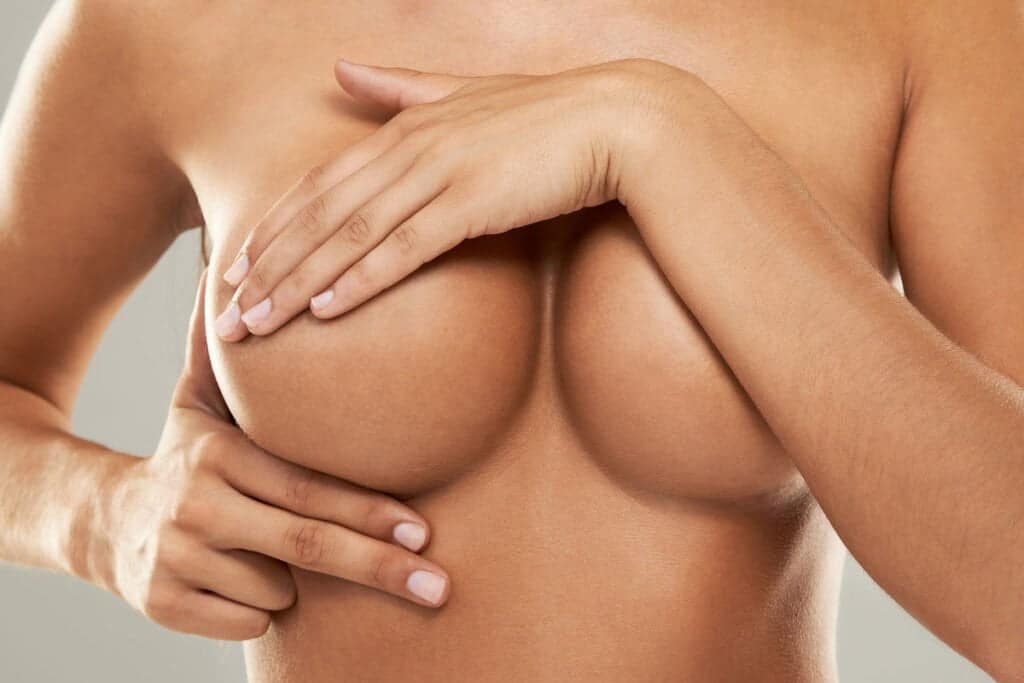A mommy makeover represents a transformative journey for mothers aiming to reclaim their pre-pregnancy body shape. This comprehensive cosmetic strategy combines various procedures tailored to address the physical changes post-childbirth, offering a path towards enhanced self-confidence and well-being. By integrating advanced surgical techniques, the makeover focuses on areas most affected by pregnancy, such as the abdomen and breasts, ensuring results that align with individual aesthetic goals. As each mother’s experience with childbirth is unique, so too are the customizable options available in a mommy makeover plan.
Understanding Mommy Makeover
Core Components
A mommy makeover combines several cosmetic procedures. These aim to restore a woman’s body shape after pregnancy. Breast and abdominal surgeries are typically included.
Many women experience changes in their bodies due to pregnancy and breastfeeding. A mommy makeover addresses these areas specifically. It helps mothers regain their pre-pregnancy appearance.
Tailored Approach
Each mommy makeover is unique, tailored to meet individual goals. Women have different postpartum recovery needs. Thus, the approach must be personalized.
Some might need more focus on the abdomen, while others may prioritize breast enhancement or lift. The key is understanding that each woman’s journey and desired outcome are distinct.
Distinction Between Weight Loss and Size Reduction
Body Reshaping
A mommy makeover focuses on reshaping the body. It’s not just about shedding pounds. The goal is to target specific areas for a more contoured look.
After understanding what a mommy makeover entails, it’s important to grasp how it differs from general weight loss efforts. Unlike dieting or exercise that reduces overall body weight, this procedure aims at sculpting the body. By focusing on areas like the abdomen, breasts, and hips, it enhances one’s shape rather than just decreasing the scale number.
Targeted Contouring
Size reduction in a mommy makeover refers to fat removal from specific areas. This leads to noticeable size changes without affecting overall weight significantly.
For instance, liposuction can remove excess fat from targeted spots resulting in a slimmer appearance while the actual weight change might be minimal. This contrast highlights how size reduction and fat removal are central to achieving desired outcomes post-mommy makeover. Moreover, being at a healthy weight before undergoing such procedures is often recommended for optimal results.
Overview of Procedures in Mommy Makeover
Surgical Options
Mommy makeover typically combines several procedures. Tummy tuck, breast lift, liposuction, and breast augmentation are common. Each targets different areas affected by pregnancy and childbirth.
A tummy tuck removes excess skin and tightens muscles. It helps achieve a flatter abdomen. Breast lifts raise and reshape sagging breasts, often combined with augmentation to restore volume lost after breastfeeding. Liposuction removes stubborn fat deposits, refining the body’s contour.
Non-Surgical Enhancements
Not all mommy makeovers involve surgery. Laser treatments and injectables offer non-invasive alternatives.
Laser treatments can reduce stretch marks and improve skin texture. They require no downtime, unlike surgical options. Injectables like Botox or dermal fillers address facial concerns such as wrinkles or loss of volume.
Tailored Approach
Procedure selection is crucial in a mommy makeover. Desired outcomes guide this process during consultation with cosmetic surgery affiliates. Physical examination determines suitability for each procedure, ensuring safety and effectiveness.
For instance:
- A woman seeking abdominal tightening might benefit from a tummy tuck.
- Another aiming for fuller breasts may choose breast augmentation.
Factors Influencing Size Loss
Baseline Composition
Patient’s baseline body composition is fundamental. It varies greatly among individuals. Some may have more excess fat, while others might struggle with loose skin or a combination of both.
The initial type and amount of unwanted fat and loose skin determine the starting point. A patient with higher amounts of stubborn fat may see dramatic changes post-surgery. In contrast, those primarily dealing with loose skin might notice subtler size reduction but significant tightening effects.
Surgical Intervention
The extent of surgical intervention directly impacts size loss. Procedures in a mommy makeover can range widely, from liposuction to remove excess fat to tummy tucks that address both excess skin and lost volume.
- Liposuction targets unwanted fat.
- Tummy tucks eliminate excess skin and tighten muscles.
Choosing multiple procedures increases the potential for size reduction but also involves more recovery time.
Lifestyle Choices
Post-operative lifestyle choices play a critical role in maintaining results long-term. Healthy habits are essential for preserving the outcomes of surgery.
Regular exercise helps keep weight stable and muscles toned. A balanced diet supports overall health and prevents new accumulations of stubborn fat. Avoiding significant weight fluctuations ensures lasting results from your mommy makeover.
Realistic Expectations for Size Reduction
Weight Loss Myths
A mommy makeover is not a weight loss solution. It’s crucial to understand this. Many believe it can replace regular exercise and a healthy diet, but that’s not true.

This procedure aims to enhance your body shape, focusing on areas like the abdomen and breasts. However, reaching your ideal weight beforehand is advised. This ensures better outcomes.
Individual Results
Results vary greatly from person to person. Your body type plays a significant role in the changes you’ll see.
For some, the waist size reduction is dramatic; for others, it’s more subtle. Key factors include:
- The procedures chosen
- Your starting point
- How your body heals
It’s important to have patience too. Final results may take months as your body adjusts and heals from procedures targeting stretch marks or tightening abdominal muscles.
Setting Goals
Having clear goals is essential before undergoing any surgery. Think about what you want:
- A youthful appearance?
- Reduced pant sizes?
- Tighter abdominal muscles?
Your surgeon can help tailor the makeover to meet these objectives while keeping expectations realistic.
Remember, significant changes often come with time and commitment beyond surgery—through maintaining a healthy lifestyle.
Importance of Customized Approach
Tailored Plans
A customized approach is crucial in a mommy makeover. Every person’s body and goals are different. This means there is no one-size-fits-all plan.
Surgeons must tailor plans to meet each individual’s needs. They consider what you want from the surgery. They also look at your unique body shape and structure. This ensures the plan fits just right for you.
Health Consideration
Your health history plays a big role in planning your mommy makeover. It’s an effective way to ensure safety and great results.
Doctors review your past medical records before deciding on procedures. This helps them avoid risks and choose the safest options for you.
Open Communication
Open communication with your surgeon is key to success. It helps align expectations with reality.
You should feel comfortable discussing your desires and concerns openly. Your surgeon can then set realistic expectations based on their expertise.
Recovery and Aftercare Essentials
Downtime Variation
Downtime after a mommy makeover can differ greatly. It depends on the types of procedures done and how fast a patient’s body heals. Some may bounce back in weeks, others might take longer.
Patients should expect some rest time. This allows the body to repair tissues affected during surgery. The more complex the procedure, like working on the abdomen, the longer recovery might be.
Aftercare Instructions
Following aftercare instructions is crucial for healing. Doctors provide guidelines tailored to each patient’s needs. These include how to care for incisions and when to resume activities.
Ignoring these instructions can lead to complications or prolong recovery time. Hence, strict adherence promotes better outcomes and faster return to daily life.
Long-term Maintenance
Maintaining results requires effort beyond initial recovery. Adopting healthy lifestyle habits is key for lasting effects of a mommy makeover.
This involves:
- Regular exercise
- Balanced nutrition
- Avoiding habits that could reverse improvements such as significant weight gain or future pregnancies
In essence, long-term success hinges on patients’ commitment to their overall health.
Cost and Preparation Considerations
Expense Variability
The cost of a mommy makeover can differ greatly. This is due to the procedures selected and where you live. For example, major cities often have higher prices than smaller towns.
- Breast augmentation
- Tummy tuck
- Liposuction
These are common choices, each with its own price tag. Some parts of the country charge more for these services.
Insurance might cover part of the cost. But this is only if a procedure is needed for medical reasons. It’s rare but worth checking with your provider.
Mental and Physical Prep
Preparing for surgery is crucial. Both mental and physical preparation play big roles in recovery success.
Firstly, an initial consultation will help set realistic expectations. Discussing benefits and risks with your surgeon gives clarity about what to expect.
Physically getting ready involves several steps:
- Following a healthy diet.
- Quitting smoking.
- Adjusting current medications as advised by your doctor.
Doing these can lessen surgery risks and aid in faster recovery.
Summary
A mommy makeover offers a transformative journey tailored to meet the unique needs of each woman post-pregnancy, aiming for size reduction and enhanced body contours. It encompasses a variety of procedures, emphasizes the importance of realistic expectations, and underscores the necessity of a customized approach. Recovery, aftercare, cost, and preparation are crucial aspects that contribute to the success and satisfaction derived from this comprehensive cosmetic strategy. The decision to undergo a mommy makeover should be informed by a thorough understanding of these factors, alongside professional guidance.
Choosing to embark on this transformative path requires careful consideration and consultation with experienced professionals. It’s essential for individuals to weigh the benefits against the recovery time and financial investment involved. For those ready to reclaim their body confidence post-pregnancy, reaching out to a certified plastic surgeon for a personalized consultation is the next step. Embrace the journey towards rejuvenation with confidence and informed expectations.
Frequently Asked Questions
What is a Mommy Makeover?
A Mommy Makeover refers to a combination of cosmetic surgeries aimed at restoring a woman’s body shape post-pregnancy. It typically includes procedures like tummy tuck, breast lift or augmentation, and liposuction.
How does it differ from weight loss?
Unlike weight loss that reduces fat mass throughout the body, a Mommy Makeover focuses on specific areas for size reduction and contouring, offering more targeted results.
What procedures are commonly included in a Mommy Makeover?
Common procedures include tummy tuck (abdominoplasty), breast lift or augmentation, liposuction, and sometimes labiaplasty. The choice depends on individual needs and goals.
Can everyone achieve the same size reduction with a Mommy Makeover?
No. Factors such as skin elasticity, initial body composition, and individual health conditions influence the extent of size reduction achievable through these surgical interventions.
What should one realistically expect in terms of size reduction from a Mommy Makeover?
Realistic expectations vary; however, significant improvement in body contour and symmetry can be expected while understanding limitations based on personal anatomy and health status.
Why is customization important in a Mommy Makeover?
Each woman’s body reacts differently to pregnancy; hence customized plans ensure procedures align with individual aesthetic goals while considering unique anatomical factors for optimal outcomes.
What are key considerations during recovery from a Mommy Makeover?
Post-surgery care involves managing discomfort with prescribed medications, following surgeon’s advice on activity restrictions to facilitate healing, attending follow-up appointments for monitoring progress.




